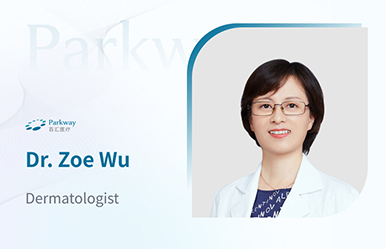What Women of Different Ages Should Pay Attention To
2021-10-14

Girls go through many stages as they grow up. To navigate this health “minefield”, careful attention must be paid to the different challenges encountered by each age group.
Infancy
Proper genital care plays a vital role in the future reproductive health of infants.
- Avoid excessive cleaning. Use warm water to rinse and remove waste material and bacteria on female infants\' vulvas, and then use clean gauze or towels to dry the water. Do not use soap, shower gel, or other washing agents designed for adults to clean infant genitals!
- Wipe from front to back after defecation or urination. Do not wipe back and forth repeatedly or from back to front, so as to avoid causing infection through the transfer of Staphylococcus or E. coli from the feces to the genitals;
- Change paper diapers frequently
Adolescence
One of the biggest health concerns of adolescent girls is dysmenorrhea. Many factors such as stress, hormone imbalance, infection, etc. can lead to menstrual menstrual disorder and irregular menstruation. During menstruation, avoid washing hair with cold water and limit intake of raw and cold food, so as to avoid catching a cold and causing uterus contractions, which can result in dysmenorrhea.
Another issue that female friends between
the ages of 16 and 26 need to consider is human papillomavirus (HPV)
vaccination.
At present, it is recommended that the
bivalent HPV vaccine marketed in China be used for women aged 9 to 45 years,
the tetravalent HPV vaccine for women aged 20 to 45 years, and the nine-valent
HPV vaccine for women aged 16 to 26 years.
What is the difference between the different HPV vaccines?
- Bivalent HPV vaccine: It can prevent cervical cancer caused by HPV16 and HPV18. More than 70% of cervical cancers are caused by these two viruses.
- Quadrivalent HPV vaccine: It can prevent HPV types 6, 11, 16, and 18.
- Nine-valent HPV vaccine: Targets HPV types 6, 11, 16, 18, 31, 33, 45, 52, 58, and is said to prevent 90% of cervical cancers.
Who are not suitable for the HPV vaccine?
People who are allergic to the HPV vaccine (yeast, protein
allergies), suffering from a cold, or pregnant are not suitable for the HPV
vaccine. The most common side effects are mild-to-moderate injection site
reactions: pain, erythema, and swelling. The incidence of the above-mentioned side
effects of the nine-valent HPV vaccine is slightly higher than that of the
quadrivalent HPV vaccine. Systemic adverse effects: headache, fever, nausea,
and dizziness. The incidence of serious adverse effects is less than 0.1%.
Child-bearing Age
Women who are preparing for or have completed the
child-bearing stage are most concerned about the health of the uterus.
As an "acquaintance" of physical examinations, you
must be familiar with cervical cancer screening. The pap smear is a very
important testing method. Most cervical cancers are caused by human
papillomavirus (HPV). In most cases, HPV disappears on its own without causing
any health problems. However, some high-risk types of HPV can lead to abnormal
precancerous changes in the cervix. This process is asymptomatic, but if
untreated, these abnormal cells may develop into cervical cancer. This is why
regular cervical check is imperative are so important.
Therefore, it is recommended that girls have a pap smear
every 3 years starting from the age of 21; if your HPV test result is negative,
return for a subsequent co-test every 5 years (if you show symptoms or have a
previous pap smear with abnormality or HPV positive, increase the frequency of examinations).
Another common disease, uterine myoma, refers to
non-cancerous tumors that grow in the myometrium of the uterus. Many women with
uterine myomas are asymptomatic, however known symptoms include menorrhagia,
dysmenorrhea, pelvic/lower back pain, and frequent urination. For patients with
uterine myomas, medication can be used, but if the myomas are too many in
number or too great in size, surgical operation may be required. If the uterine
myomas are small and asymptomatic, the patient can choose not to take any
treatment, because most uterine myomas will shrink during menopause.
Menopause
Although
women of all ages are at risk of breast cancer, it is more common in women
between the ages of 40 and 50 years old.
In the early stages of breast cancer, there is usually no pain or symptoms. As the cancer develops, it will cause some changes that require special attention, including:
- Changes in the shape and size of the breasts, with visible skin change;
- Changes in the color and texture of breasts, areolas, and nipples
- Nipple discharge, retraction, asymmetry, tenderness, ulcers
Mammography (molybdenum target mammography) is still the preferred
screening modality of breast cancer screening. It is recommended that women
over the age of 40 have a mammogram once a year.
For more information or to make an appointment with a Gynecologist, please contact 400-819-6622.
Article contributed by Dr. Flora Lu, Gynecologist at ParkwayHealth




























